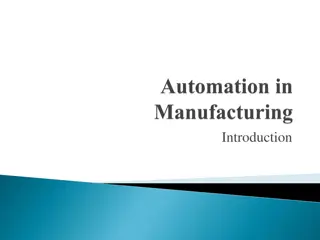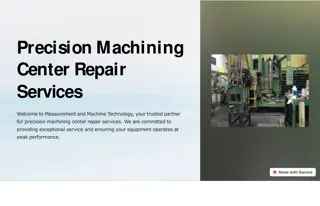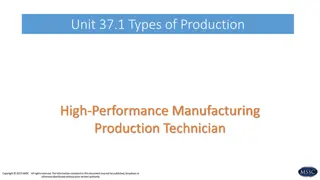Understanding Water Jet Machining in Advanced Manufacturing Processes
Water jet machining (WJM) is a cutting-edge manufacturing process where a high-velocity water jet is used to erode materials rapidly. This method involves directing a high-pressure, high-velocity water jet onto the workpiece surface, forming cavities by eroding the material. The system includes components such as a hydraulic pump, intensifier, accumulator, high-pressure tubing, jet cutting nozzle, and catcher. By harnessing the power of water at speeds up to 900 m/s, WJM offers several advantages, including precise cutting, versatility in materials, and environmental friendliness. However, it also has limitations such as higher water consumption and limited cutting thickness. Overall, water jet machining is a versatile and efficient process with various applications in industries like aerospace, automotive, and electronics.
- Water Jet Machining
- Advanced Manufacturing
- Materials Processing
- Precision Cutting
- Industrial Applications
Download Presentation

Please find below an Image/Link to download the presentation.
The content on the website is provided AS IS for your information and personal use only. It may not be sold, licensed, or shared on other websites without obtaining consent from the author. Download presentation by click this link. If you encounter any issues during the download, it is possible that the publisher has removed the file from their server.
E N D
Presentation Transcript
MENG584 Advanced Manufacturing Processes Presented by: Assist. Prof. Dr. Mohammed. Asmael
Water Jet Machining WJM Abrasive Water Jet Machining AWJM Abrasive Jet Machining AJM
Introduction Principle The machining system Process Parameters Applications Advantages Disadvantages
Introduction The key element in water jet machining (WJM) is a water jet, which travels at velocities as high as 900 m/s. When the stream strikes a workpiece surface, the erosive force of water removes the material rapidly. The water, in this case, acts like a saw and cuts a narrow groove in the workpiece material. WJM is a form of micro erosion. It works by forcing a large volume of water through a small orifice in the nozzle.
The machining system The water jet machining involves directing a high pressure (150- 1000 MPa) high velocity (540-1400 m/s) water jet (faster than the speed of sound) to the surface to be machined. The fluid flow rate is typically from 0.5 to 2.5 L/min The bulk of kinetic energy of jet is converted into pressure energy. If the local pressure caused by the water jet exceeds the strength of the surface being machined, the material from the surface gets eroded and a cavity is thus formed. Water is the most common fluid used, but additives such as alcohols, oil products and glycerol are added when they can be dissolved in water to improve the fluid characteristics
The machining system Water jet Machining consists of: Hydraulic Pump Intensifier Accumulator High Pressure Tubing Jet Cutting Nozzle Catcher
Hydraulic Pump Powered from a 30 kilowatt (kW) electric motor Supplies oil at pressures as high as 117 bars. Compressed oil drives a plunger pump termed an intensifier. The hydraulic pump offers complete flexibility for water jet cutting and cleaning applications. It also supports single or multiple cutting stations for increased machining productivity.
Intensifier Accepts the water at low pressure(typically 4 bar) and expels it, through an accumulator, at higher pressures of 3800 bar. The intensifier converts the energy from the low-pressure hydraulic fluid into ultrahigh-pressure water. The hydraulic system provides fluid power to piston in the intensifier center section. A limit switch, located at each end of the piston travel, signals the electronic controls to shift the directional control valve and reverses the piston direction. The intensifier assembly, with a plunger on each side of the piston, generates pressure in both directions.
Intensifier As one side of the intensifier is in the inlet stroke, the opposite side is generating ultrahigh-pressure output. During the plunger inlet stroke, filtered water enters the high- pressure cylinder through the check value assembly. After the plunger reverses direction, the water is compressed and exits at ultrahigh pressure.
Accumulator Maintains the continuous flow of the high-pressure water and eliminates pressure fluctuations. It relies on the compressibility of water (12 percent at 3800 bar) in order to maintain a uniform discharge pressure and water jet velocity, when the intensifier piston changes its direction.
High Pressure Tubing Transports pressurized water to the cutting head. Typical tube diameters are 6 to 14 mm. The equipment allows for flexible movement of the cutting head. The cutting action is controlled either manually or through a remote-control valve specially designed for this purpose.
Jet Cutting Nozzle Nozzle provides a coherent water jet stream for optimum cutting of low-density, soft material that is considered unmachinable by conventional methods. Nozzles are normally made from synthetic sapphire. About 200 h of operation are expected from a nozzle, which becomes damaged by particles of dirt and the accumulation of mineral deposits on the orifice due to erosive water hardness. A longer nozzle life can be obtained through multistage filtration, which removes undesired solids of size greater than 0.45 m. The compact design of the water jet cutting head promotes integration with motion control systems ranging from two-axis (XY) tables to sophisticated multiaxis robotic installations.
Catcher Acts as a reservoir for collecting the machining debris entrained in the water jet. Moreover, it reduces the noise levels [105 decibels (dB)] associated with the reduction in the velocity of the water jet from Mach 3 to subsonic levels.
Process Parameters JET NOZZLE Standoff distance - Gap between the jet nozzle (0.1 0.3 mm diameter) and the workpiece (2.5 6 mm). However for materials printed circuit boards, it may be increased to 13 to 19 mm. But larger the standoff distance, smaller would be the depth of cut. When cutting fiber-reinforced plastics, reports showed that the increase in machining rate and use of the small nozzle increased the width of the damaged layer. used in diameter
Jet Fluid Typical pressures used are 150 to 1000 MPa to provide 8 to 80 kW of power. For a given nozzle diameter, increase in pressure allows more power to be used in the machining process, which in turn increases the depth of the cut. Jet velocities range between 540 to 1400 m/s. The quality of cutting improves at higher pressures by widening the diameter of the jet and by lowering the traverse speed. Under such conditions, materials of greater thicknesses and densities can be cut.
Jet Fluid Moreover, the larger the pump pressure, the greater will be the depth of the cut. The fluid used must possess low viscosity to minimize the energy losses and be noncorrosive, and nontoxic. Water is commonly used for cutting alloy steels.
Workpiece Brittle materials will fracture, while ductile ones will cut well. Material thicknesses range from 0.8 to 25 mm or more. Table below shows the cutting rates for different material thicknesses
Applications WJM is used on metals, paper, cloth, leather, rubber, plastics, food, and ceramics. It is a versatile and cost-effective cutting process that can be used as an alternative to traditional machining methods. It completely eliminates heat-affected zones, toxic fumes, recast layers, work hardening and thermal stresses. It is the most flexible and effective cleaning solution available for a variety of industrial needs. In general the cut surface has a sandblast appearance. Moreover, harder materials exhibit a better edge finish. Typical surface finishes ranges from 1.6 m root mean square (RMS) to very coarse depending on the application..
Both the produced surface roughness and tolerance depend on the machining speed Cutting WJM is limited to fibreglass and corrugated wood. Drilling The process drills precision-angled and -shaped holes in a variety of materials for which other processes such as EDM or EBM are too expensive or too slow. Machining of fiber-reinforced plastics The feed rate attainable depends on the surface quality required. Cutting of Rocks Deburring In this method burrs are broken off by the impact of water.
Cutting of PCBS (printed circuit boards) Using a small-diameter water jet, a printed circuit board (PCB) can be cut at a speed that exceeds 8 m/min, to the accuracy of 0.13 mm. Boards of various shapes for use in portable radios and cassette players can be cut using computer numerical control (CNC) technology.
Surface Treatment Removing deposits and residues without toxic chemicals, which eliminates costly cleanup and disposal problems. Surface cleaning of pipes and castings, decorative finishing, nuclear decontamination, food utensil cleaning, degreasing, polishing, preparation for precise inspection, and surface texturing. Economical surface preparation and coating removal. Removing corrosion, spray residue, soluble salts, chemicals, and surface damage prior to recoating or painting. Wire Stripping Can remove the wire insulating material without damaging the metal or removing the tinning on the copper wire.
Abrasive Water Jet Machining WJM is suitable for cutting plastics, foods, rubber insulation, automotive carpeting and headliners, and most textiles. The addition of abrasives to the water jet enhanced the material removal rate and produced cutting speeds between 51 and 460 mm/min. Generally, AWJM cuts 10 times faster than the conventional machining methods of composite materials. The introduction of compressed air to the water jet enhances the deburring action.
The machining system Water delivery Abrasive hopper and feeder Intensifier Filters Mixing chamber Cutting nozzles Catcher
The machining system After the pure water jet is created, abrasives are added using either the injection or suspension methods
The machining system Water is pumped at a sufficiently high pressure, 200-400 MPa (2000-4000 bar) using intensifier technology. An intensifier works on the simple principle of pressure amplification using hydraulic cylinders of different cross- sections. When water at such pressure is issued through a suitable orifice (generally of 0.2- 0.4 mm dia), the potential energy of water is converted into kinetic energy, yielding a high velocity jet (1000 m/s). Such high velocity water jet can machine thin sheets/foils of aluminium, leather, textile, frozen food etc.
Advantages It has multidirectional cutting capacity. No heat is produced. Cuts can be started at any location without the need for predrilled holes. Wetting of the workpiece material is minimal. There is no deflection to the rest of the workpiece. The burr produced is minimal. The tool does not wear and, therefore, does not need sharpening.
Advantages The process is environmentally safe. There is multiple head processing. Simple fixturing eliminates costly and complicated tooling, which reduces turnaround time and lowers the cost. Grinding and polishing are eliminated, reducing secondary operation costs. The narrow kerf allows tight nesting when multiple parts are cut from a single blank. It is ideal for roughing out material for near net shape.
Advantages It is ideal for laser reflective materials such as copper and aluminum. It allows for more accurate cutting of soft material. It cuts through very thick material such as 383 mm in titanium and 307 mm in Inconel.
Disadvantages Hourly rates are relatively high. It is not suitable for mass production because of high maintenance requirements. Very thick parts can not be cut with water jet cutting and still hold dimensional accuracy. If the part is too thick, the jet may dissipate some, and cause it to cut on a diagonal, or to have a wider cut at the bottom of the part than the top. It can also cause a rough wave pattern on the cut surface. WATER JET LAG
Abrasive Jet Machining In abrasive jet machining (AJM) a focused stream of abrasive grains of Al2O3 or SiC carried by high-pressure gas or air at a high velocity is made to impinge on the work surface through a nozzle of 0.3- to 0.5-mm diameter. The workpiece material is removed by the mechanical abrasion (MA) action of the high-velocity abrasive particles. It is typically used to cut, clean, peen, deburr, deflash, and etch glass, ceramics, or hard metals.
Machining system 1. Gas (nitrogen, CO2, or air) is supplied under a pressure of 2 to 8 kg/cm2. 2. After filtration and regulation, the gas is passed through a mixing chamber that contains abrasive particles and vibrates at 50 Hz. 3. As the abrasive particles impact the surface of the workpiece, it causes a small fracture at the surface of the workpiece. The material erosion occurs by the chipping action. 4. The erosion of material by chipping action is convenient in those materials that are hard and brittle.
Machining system 5. As the particles impact the surface of workpiece, it causes a small fracture and wear, which is carried away by the gas along with the abrasive particles. 6. The abrasive particles once used, cannot be re-used as its shape changes partially and the workpiece material is also clogged with the abrasive particles during impingement and subsequent flushing by the carrier gas. 7. The nozzle standoff distance is 0.81 mm. The relative motion between the workpiece and the nozzle is manually or automatically controlled using cam drives.
Machining system/ abrasive Aluminum oxide (Al2O3) and silicon carbide powders are used for heavy cleaning, cutting, and deburring. Magnesium carbonate is recommended for use in light cleaning and etching, while sodium bicarbonate is used for fine cleaning and the cutting of soft materials. Note: Oxygen should never be used because it causes a violent chemical reaction with workpiece chips or abrasives. Commercial-grade powders are not suitable because their sizes are not well classified.
Material removal rate The material removal rate, cut accuracy, surface roughness, and nozzle wear are influenced by: Size and distance of the nozzle. composition, strength, size, and shape of abrasives; flow rate composition, pressure, and velocity of the carrier gas.
Applications 1. Drilling holes, cutting slots, cleaning hard surfaces, deburring, polishing, and radiusing 2. Machining intricate shapes or holes in sensitive, brittle, thin, or difficult-to-machine materials. 3. Insulation stripping and wire cleaning without affecting the conductor 4. Micro-deburring of hypodermic needles. 5. Frosting glass and trimming of circuit boards, 6. Removal of films and delicate cleaning of irregular surfaces because the abrasive stream is able to follow contours
Advantages It is best suited for machining brittle and heat-sensitive materials like glass, quartz. Because AJM is a cool machining process. Used for machining superalloys and refractory materials. It is not reactive with any workpiece material. No tool changes are required. Intricate parts of sharp corners can be machined. The machined materials do not experience hardening. No initial hole is required for starting the operation as required by wire EDM. Material utilization is high. It can machine thin materials.
Disadvantages/ Limitations The removal rate is slow. Stray cutting can t be avoided (low accuracy of 0.1 mm). The tapering effect may occur especially when drilling in metals. The abrasive may get impeded in the work surface. Suitable dust-collecting systems should be provided. Soft materials can t be machined by the process. Silica dust may be a health hazard. Ordinary shop air should be filtered to remove moisture and oil.























